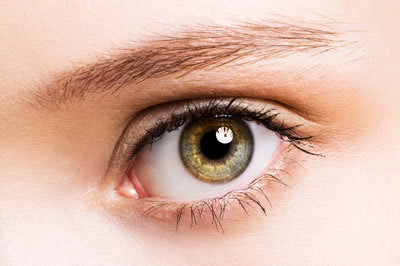How eyes adapt to the darkness

Have you ever wondered how your eyes can adapt too many different light conditions? Our eyes are amazingly versatile – we can see perfectly well in a vast variety of light conditions thanks to a very neat system that is able to adapt to brilliant sunshine and then to total darkness when required.
This is all made possible by two distinct parts of the eye – the pupil and the retina
The pupil acts as the gateway for letting light into the eye. It is able to expand and contract controlling the amount of light.The pupillary light reflex controls the size of the pupil – when the light intensity is greater, the pupil becomes smaller and allows less light in. When dark, the pupil becomes larger to enable more light to enter the retina.
The retina receives the light on the back of the eye. In the retina there are two different types of cells. The cone cells are able to detect bright light, while the rod cells work at their best in low light, detecting black and white images. So, in the dark, the rods become active as they adapt to the amount of available light.
When you go from a brightly lit environment to a dark room, the cones can’t be effective because they need plenty of light to work effectively, so this is when rods go to work. The rods rely on a series of chemical reactions over a period of a few minutes to activate them. This is why there is a delay when you walk into a darkened room before your vision improves. The rods can take up to an hour to completely activate, which is why you notice your vision improve as you spend more time in the dark.
Most of us will be familiar with this experience, when what at first appears to be total darkness slowly becomes more visible as our eyes acclimatise to the low level of light available.
Interestingly, soldiers may be trained to cover one eye when operating in a brightly lit room at night to protect their night vision. So, when they are back in darkness, they can open the closed eye and the rods are ready to go to work straight away without a delay.
What about carrots?
Believe it or not, carrots can play a part in good light adaptation because they provide a high amount of vitamin A. However, they don’t provide a miracle – if you eat them regularly your vision won’t be any better. If you eat too many of them, your skin can turn orange in colour, but your vision will be the same as ever. It’s when you don’t have sufficient Vitamin A in your diet that your vision can be poorly affected.
The story about carrots giving special vision started in WW2 The British RAF told the Newspapers that eating carrots had been responsible for the increasing success of their pilots during night raids. However, this myth was started by the RAF to hide the fact that they had been using radar to target the enemy planes, something they wanted to keep secret from the Luftwaffe.
Good vision can certainly maintained by a healthy diet, but if you really want to see better at night, you should buy some night vision goggles rather than a bag of carrots.



 Buy Contact Lenses
Buy Contact Lenses Book an Appointment
Book an Appointment